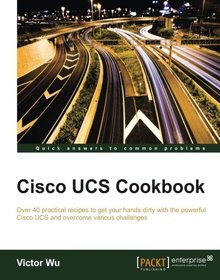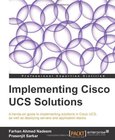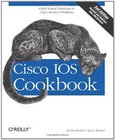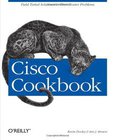Cisco UCS Cookbook

Book Details:
| Publisher: | Packt Publishing |
| Series: | Packt , Cookbook |
| Author: | Victor Wu |
| Edition: | 1 |
| ISBN-10: | 1785888986 |
| ISBN-13: | 9781785888984 |
| Pages: | 364 |
| Published: | Mar 21 2016 |
| Posted: | Apr 17 2017 |
| Language: | English |
| Book format: | |
| Book size: | 32.45 MB |
Book Description:
Over 40 practical recipes to get your hands dirty with the powerful Cisco UCS and overcome various challenges About This Book * Master the skills of minimizing cost, enabling your business to work faster by reducing cycle times for reporting and improving overall revenue * Work through hands-on recipes for efficient deployment approaches, see computing techniques, and explore new operational models with UCS * Render a better work-flow management, ensure effective monitoring, and learn new deployment paradigms for the operational infrastructure with the help of this book Who This Book Is For This book is for competent system/network or storage administrators who are working with Cisco UCS, but now want to learn new ways to compute UCS. What You Will Learn * Familiarize yourself with information on the latest information on memory management practices, virtualization architectures, and the specific technical advantages of UCS * Get a concrete understanding of integrating processes and techniques to ensure effective convergence of LAN/SAN * Get to know the best practices of Cisco UCS, EMC Storage, and VMware vSphere * Master migrating data from other band servers or Blade to Cisco UCS * Comprehend how to replicate and back up UCS to remote sites UCS * Assimilate innovative techniques to deploy UCS to leverage its full potential * Gather information on installing and configuring automatic and manual Pinning * Discover ways to integrate a system in Cisco UCS In Detail Cisco Unified Computing System (UCS) is a data center server platform that is used for computing, deploying, and storing resources in data center environments. This cookbook aims to teach you about various tasks you can implement to improve your existing method of configuring and deploying UCS. You will start by learning how to upgrade your firmware on Brocade and Cisco Fibre Channel Switch and will move on to enhance your knowledge of LAN connectivity. We will then discuss how to configure Windows 2008 and 2012 local boot in Cisco UCS. Next, you will learn how to install the operating system on Cisco UCS and use Cisco UCS Power Calculator to calculate the UCS consumption. Finally, we'll take a look at backup solutions. By the end of the book, you will know several ways to build and compute in data center environment using Cisco UCS. Style and approach This guide explains every task in a conversational and easy-to-follow style. You can open this book up to the task you want to learn and will be able to perform that task by the end of the recipe.
Download Link:
Related Books:
Implementing Cisco UCS Solutions
A hands-on guide to implementing solutions in Cisco UCS, as well as deploying servers and application stacks Overview Learn about various Cisco UCS equipment options suitable for your deployment and configure various Cisco UCS components like LAN, SAN, Resource pools, Backup, Restore, RBAC, policies, and service profiles Configure Cisco UCS Emulator for Cisco UCS practice lab and integrate Cisco UCS with 3rd party applications With implementation examples for each topic using the Cisco UCS Emulator , learn how to configure your Cisco UCS environment The book will follow a hands-on approach to help you deploy servers and application stacks In Detail Cisco Unified Computing System(UCS) provides unique features for the contemporary data centres. Cisco...
Cisco IOS Cookbook
2nd Edition
Never has something cried out for a cookbook quite as much as Cisco's Internetwork Operating System (IOS). IOS is powerful and flexible, but also confusing and daunting. Most tasks can be accomplished in several different ways. And you don't want to spend precious time figuring out which way is best when you're trying to solve a problem quickly. That's what this cookbook is for. Fortunately, most router configuration tasks can be broken down into several more or less independent steps: you configure an interface, you configure a routing protocol, you set up backup links, you implement packet filters and other access control mechanisms. What you really ...
Cisco Cookbook
While several publishers (including O'Reilly) supply excellent documentation of router features, the trick is knowing when, why, and how to use these features There are often many different ways to solve any given networking problem using Cisco devices, and some solutions are clearly more effective than others. The pressing question for a network engineer is which of the many potential solutions is the most appropriate for a particular situation. Once you have decided to use a particular feature, how should you implement it? Unfortunately, the documentation describing a particular command or feature frequently does very little to answer either of these questions.Everybody who has worked with Cisco routers for any length of time has had to ask their f...
2007 - 2021 © eBooks-IT.org



